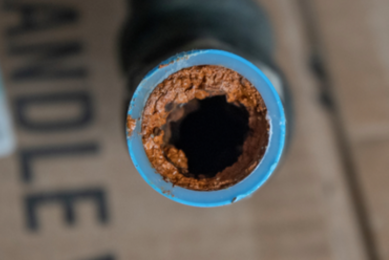Forced ventilation by fans (III)

Critical temperatures are defined as those between which the pig is most comfortable and thus should perform to its genetic maxima – called the pig’s ‘comfort zone’.
LCT
Sure – we all know about the comfort zone. We also know that energy, in the form of heat, is expensive and that in the process of keeping the pigs ‘comfortable’ we need to keep the pig just above its lower critical temperature (LCT) – an ambient temperature so as to minimise cost of food energy, and supplementary heat input if this is needed. Not well above – just above, as this is most cost-effective. Note the word ‘its’ – there is no one single threshold temperature at the lower end of the comfort zone, as this will vary from pig to pig dependent on several key influences (see Box).
ECT and UCT
At the other end of the comfort zone when things begin to get too hot, we need to be aware of two critical temperatures – not one. The first one is the pig’s evaporative critical temperature (ECT) and the second a little further up the scale – its upper critical temperature (UCT). Much has been written in textbooks of UCT as the upper threshold of the comfort zone, but in my view from years of on-farm advisory work, ECT is far more important – important because it is usually recognisable by the pig or pigs panting. This is a warning sign that if the ambient temperature is not immediately lowered then the pig could be approaching the definitely dangerous UCT level. UCT in its lower reaches considerably affects performance, in some cases stopping it completely, and if it climbs still further – then death will occur. ECT also signals the appearance of stress which starts, by degrees, to affect performance. Caused by what I call the ‘worry hormones’ which are antagonistic to growth, food conversion and reproduction.
Now – not later!
I have toured many piggeries with the stockpeople with me and seen a sow or some weaners panting, and told my companion to get some water on to them quickly.
“Sure, we’ll do it as soon as we can,” has been the reply.
“No – go and do it now,” I said. “Because damage is being done to the pig and to its performance in every minute delayed. Once they have been sprayed, let’s look at what we can do in the building to stop the temperature getting to this ECT level again.”
Estimating LCT
Keeping an eye on the visible signs of surpassing the upper level of the comfort zone is rather easier than guarding against dropping below LCT at the colder end, as panting and other signs of heat excess (wrong mucking, urine
drinking, aggression) are apparent. Keeping the pig just above its LCT is much more complicated. Figure 1 explains what happens. Many factors influence LCT as the box shows.
Figure 1 shows how the pig reacts to unfavourable temperature to divert food away from growth or reproduction efficiency into trying to maintain its metabolism.
How to get it right
Complicated, isn’t it? All these factors individually raise or lower the final LCT threshold to be achieved. If you understand the principles in Figure 1 and then use the tables now available from various sources so as to arrive at the most cost-effective comfort zone for your pigs, then you should stand to gain the advantages of between 15 to 20 kg more lean meat per tonne of food fed to the finished pig and between eight to ten more weaners secured per sow-lifetime – as evidenced from my client’s records.
The most common influences on the LCT
Appetite/ food intake
Food/ nutritional specs
Age of the pig
Fat cover
Floor type and insulation
Bedding
Air speed over the pig
Draughts
Temperature of incoming air
Stocking density
Anxiety stress
Covers over the pen
Relative humidity
Level of disease
Speed of growth
[Source: Pig Progress magazine Vol 29 nr 7, 2013 – ‘What the textbooks don’t tell you… series’]











